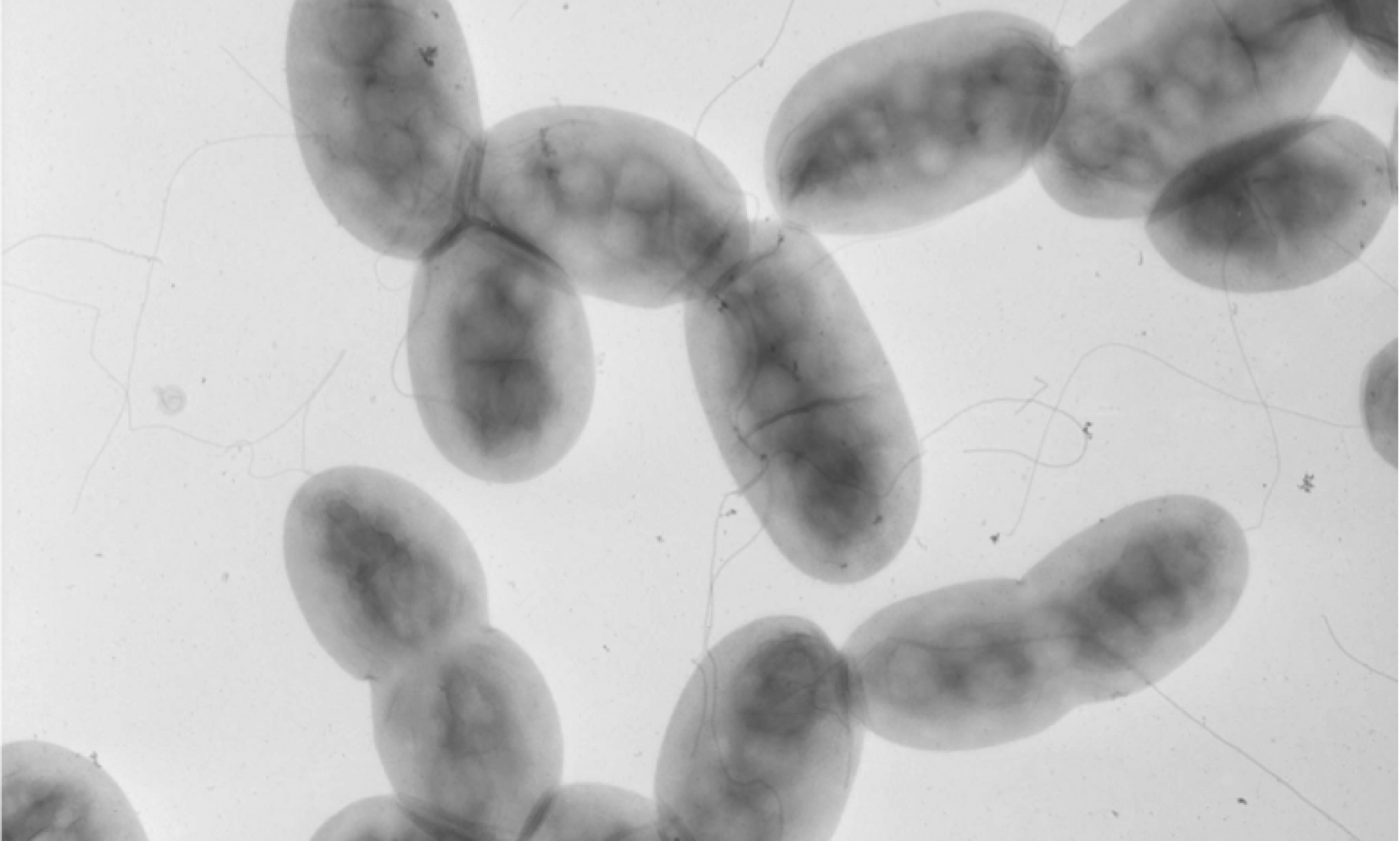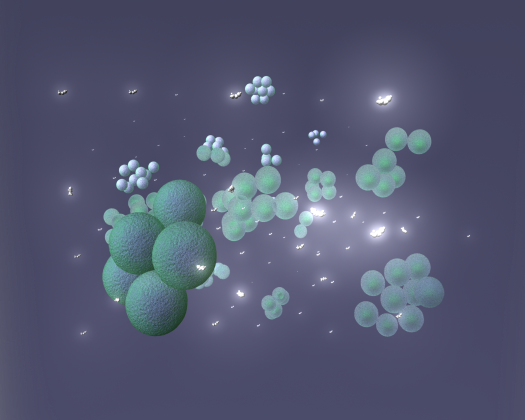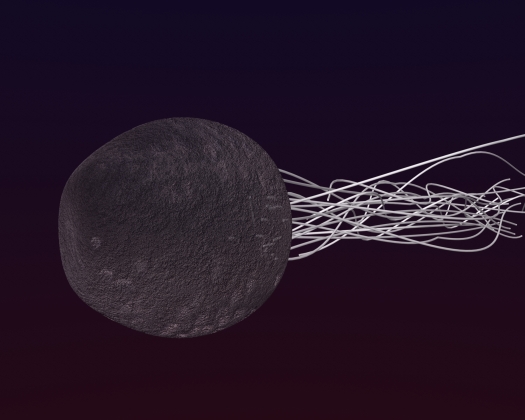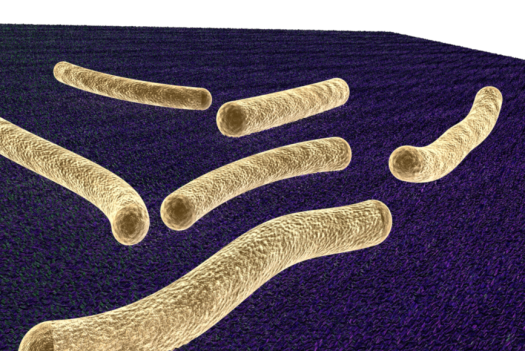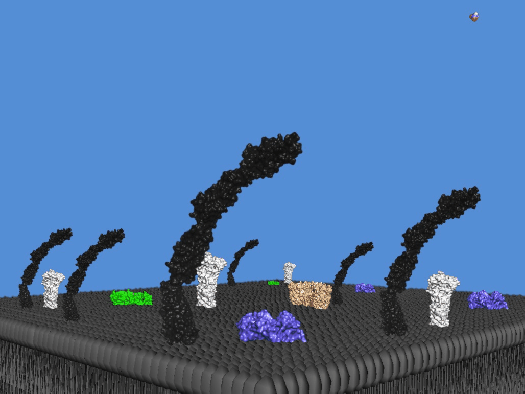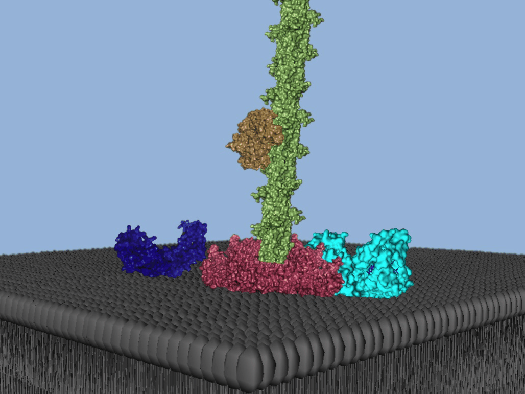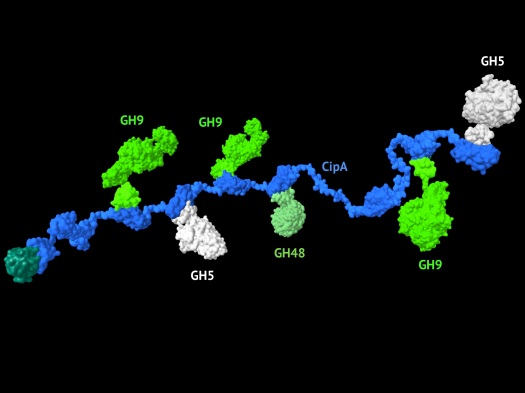
I have heard of the cellulosome for quite some time. It discribes a extracellular ‘factory’ of enzymes some bacteria (or fungi) are equipped with to degrade the components of the plant cell wall. These enzymes are held by a scaffold structure projecting out of the cell. Several bacterial species to date are known to encode some sort of cellulosome. Here, I will focus on a model species, Clostridium thermocellum. I never really thought twice about cellulosomes until recently when researching for an upcoming project. Now, however, I have a great appreciation and respect for this massive, impressive apparatus.
The backbone of sorts for the cellulosome is the scaffoldin CipA. CipA is a monstrous protein with many domains, most of which necessary to attach the enzymes needed to break down plant cell walls. CipA contains 9 cohesins, domains used to securely allow different proteins to interact. The enzymes ( I will describe soon) contain dockerin domains that interact with cohesins. CipA also contains a carbohydrate binding module (CBM) which allows it to directly interact with cell walls.
Many of the cohesins are used to attach carbohydrate degrading enzymes, usually of two classes: endoglucanases and exoglucanases. These work in concert to breakdown cellulose and other carbohydrate polymers. Apart from the catalytic portions of these proteins are dockerin, needed to bind to CipA, and other domains like the Ig domain or X domain.
These enzymes ‘fit’ onto the scaffold protein like Legos. This makes them very modular. Now consider other scaffold proteins have a different type of cohesin (cohesin II) that can be used to attach other scaffold proteins thus making polycellulosomes. For example, Cthe_0736 is a scaffold protein with 7 type II cohesins. This means Cthe_0736 can have 6 other scaffold proteins attached to it meaning this polycellulosome could contain up to 63 individual enzymes which is potentially common considering isolated cellulosomes vary in molecular weight considerably.
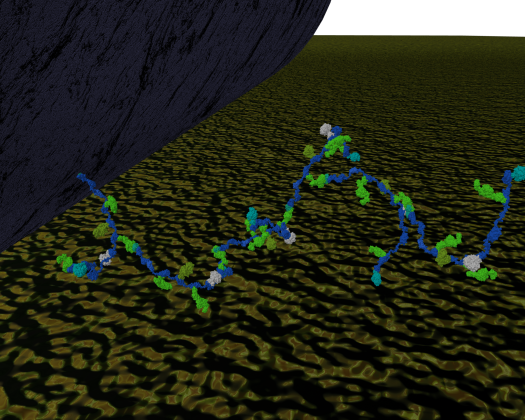
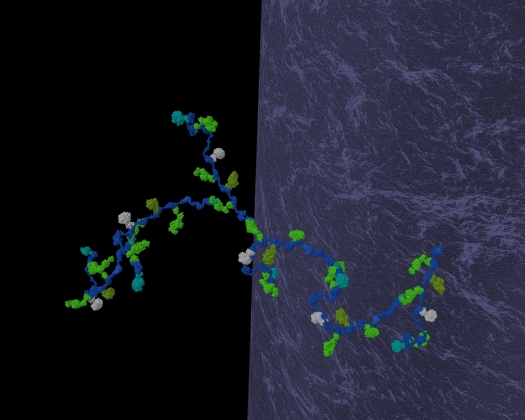
In a later post, I will go into a little detail on how these cellulosomal enzymes actually are able to degrade anhydrous polymers of carbohydrate.
Related articles
- The chemical composition of “old book smell” (boingboing.net)
- A creature from an alkaline spring could improve biofuel processing (phys.org)
- Expression of Cellulosome Components and Type IV Pili within the Extracellular Proteome of Ruminococcus flavefaciens 007 (plosone.org)
- Digestive Systems (breakinggroundagscience.wordpress.com)
